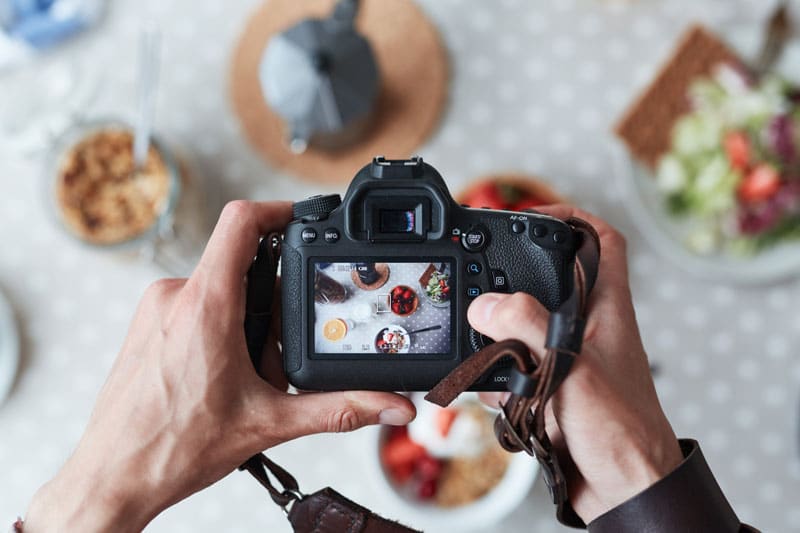
As we often say, there’s no such thing as a one-size-fits-all publishing plan, and self-publishing a photo book is a great example. Some rules of thumb for publishing a novel aren’t so relevant here, and new guidelines and priorities come into play. Above all, design and layout choices are key to creating a visual impact for readers. But the importance of design plays a role in the entire publishing process.
Thinking Content
As with other books, consider why you want to self-publish a photo book. What are your goals? If sales are a high priority, what do you have to offer readers? Is there an audience? Having striking, high-quality photos is obviously important, but it’s just a foundation to build on. You’ll need to give readers a reason to find your book and open it up in the first place before they can even see your photos, and that’s where a theme or focus comes in. You may have years’ worth of beautiful photography with a range of subjects, but for your book it’s wise to narrow it down to the best photos that fit a single compelling theme.


This can be anything that readers can relate to, find interesting, or be curious about. It could be a certain location, like a city. It could be pets, like cats, dogs, or horses. It could be nature photos, but even then, it might be beneficial to focus on a certain location such as a national park. Relatively few readers will simply look up “photo books.” But lots of readers will look for books on dogs, Yellowstone National Park, or San Francisco. The more of a niche you can find, the better. If you have a collection of old photos of San Francisco in the 70s, for example, your book will stand out even more. In short, just make sure you can imagine why a reader would do a search on Amazon that might turn up your book.
Focus on the Best Photos
Many photographers will have thousands of photos they’re proud of. One of the most important parts of the process will be narrowing down what photos you want to publish. Choosing a theme should help quite a bit, but keep in mind you may have to leave out some quality photographs to distill your work into a single book. Also consider your book in terms of a whole rather than just a collection of photos. It might even include some text with facts, narrative, or poetry to give context and depth to the images. The best photo books will tell a story and add up to more than the sum of their parts
Design, Layout, and Format
When self-publishing a photo book, visual design is just as important as the content itself. You’ll need technical knowledge and design choices that balance professional conventions with the ability to stand out. You don’t want a book that looks like it was put together at home, but you also don’t want it to look like every other photo book out there. While a reader may be able to enjoy a novel self-published with hasty design and minimal background knowledge, these choices will make or break the all-important visual impact of a photo book. This is where it really pays off to work with professionals who have done it before. Here are a few tips to keep in mind.

- Take a look at some photo books, ideally ones that you already enjoy, with an eye for how they’re designed and why that design is successful
- Format your photos as TIFF or PNG files rather than JPEG to maintain quality when printing
- Use images with high print resolution, ideally 300 pixels per inch
- Use quality printing so the colors line up properly, to avoid moiré patterns and other color separation issues
- Convert color photos from digital RGB format to CMYK for printing. It’s better to make these conversions early on when supplying photos instead of waiting until it’s time to print
- Err on the side of giving photos enough space, avoid a crowded layout
- Use variety rather than the same layout for every page or spread, create a focal point and emphasize centerpiece photos by giving them more space than others — for example, spread across two pages.
Printing and Marketing a Photo Book
While we often recommend print-on-demand for authors, photo book authors have the most to gain from taking a chance on a small print run instead. There are often slight variations between each book with print-on-demand, and unlike with a novel, this can affect the visual quality of a photo book. There are much more limited choices for paper quality and size, which are also crucial for photo books. With a print run, you’re betting ahead of time that you can sell copies of a book, and most authors will want to start with the smallest print run possible. It’s also added incentive to make sure there’s an audience for your book and that you take marketing steps to actually reach them. Many photographers may already have a following on social media. If you aren’t already posting photos on social media, start as soon as you decide you’re interested in self-publishing a photo book. With its focus on photos, Instagram is a great place to start. On social media, viewers can follow you and enjoy your photos for free. It’s a great way to create interest, and a percentage of these followers may be willing to pay for a high-quality, hard copy version of your work. Those photos you loved but didn’t have room to include in the book? Post them to get people interested! Social media is a good tool for all authors, but photographers can actually offer a taste of what they do for free without putting in too much extra work.
Self-Publishing a Photo Book
Build your book theme around a prospective audience, and use social media to draw readers in ahead of time. Take design seriously, and make sure you’re presenting your photos in a way that helps them shine. Don’t skimp when it comes to printing quality, and make sure you have the technical knowledge to take the right steps — or work with a publisher that does. With these rules of thumb, you’ll have the best possible chance of success self-publishing your photo book.
HOW WE WORK
We’ve done it before, and it works. Our Plan, Pick, and Publish service is a proven process that
empowers every author, making their dream of creating and publishing their own book a reality.

PLAN
We assist you with this crucial first step by doing a manuscript assessment. We then strategize together to come up with a plan to align with your goals and vision.

PICK
We carefully curate 2 to 3 publishing professionals for you to choose from, for each step of the process — all experts with years of experience and proven results.

PUBLISH
We will be working on your behalf in the background, navigating all the other details to make sure your project is ready to be published.

YES, IT'S PERSONAL
You will have a dedicated book publishing consultant who is here to guide you and answer all of your questions, every step of the way.
What makes us different from other book publishers
With us, your ideas are always welcome. There’s no need to please an editor or stakeholder. We foster an environment that’s encouraging for everyone — the author, their team, and our publishing company.
-
Experienced
When you chose us, you have a team of experienced book publishing professionals at your disposal.
-
Collaborative
Collaboration is our hallmark. It's your book project, we're here to make it easier for you.
-
Strategic
With years of publishing experience, we have valuable market insights to share with you.
-
Creative
As storytellers ourselves, we know what creative energy and out-of-the-box ideas can do for a book project.
-
Invested
When you succeed, we succeed. And we’ll work with you each step of the way.

